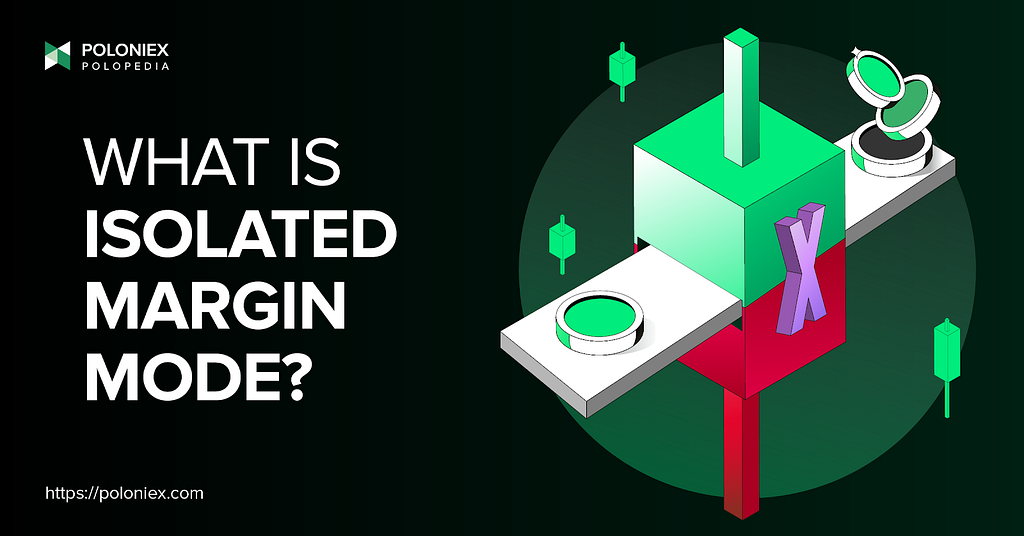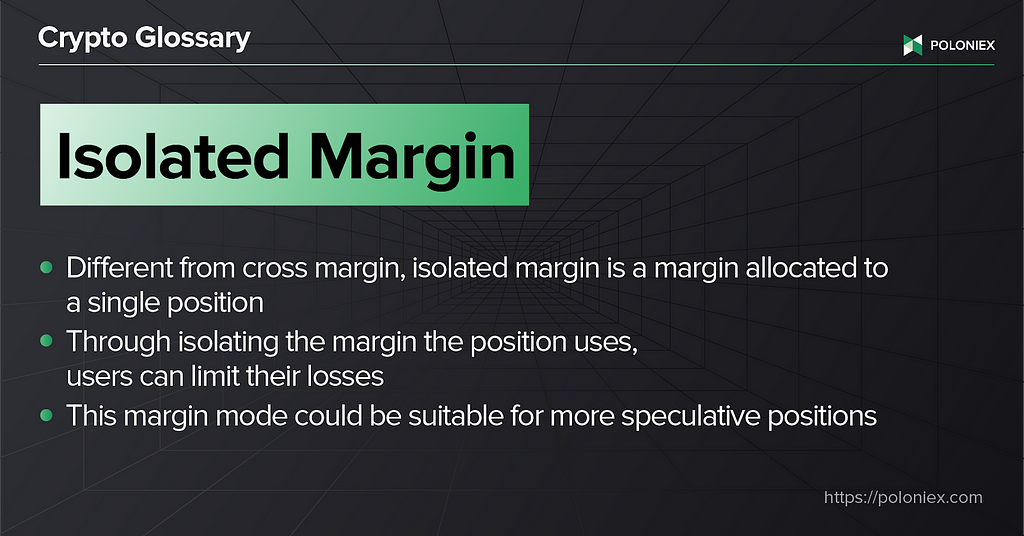Latest news about Bitcoin and all cryptocurrencies. Your daily crypto news habit.

Introduction
In this article, we’re going to introduce you to a powerful tool to have in your trading arsenal: Isolated margin mode. Isolated margin mode is a type of margin trading that allows you to trade with leverage while keeping your margin and position separate from your exchange account balance.
Now, before we dive into the details of isolated margin mode, it’s important to note that margin trading carries additional risk. You could potentially lose more than your initial investment if the market moves against you, so it’s important to carefully consider the risks and do your own research before getting started.
That being said, isolated margin mode can be a powerful tool for experienced traders who are looking to maximize their potential profits or manage their risk more effectively. With isolated margin mode, you can adjust your leverage and position size as needed, giving you more flexibility in your trading strategy.

From our Crypto Glossary entry on isolated margin
What is isolated margin mode?
In isolated margin mode, each individual position has its own dedicated margin balance. This allows traders to manage the risk for each position separately by adjusting the amount of margin allocated to each one. By restricting the margin allocated to each position, traders can more effectively manage their overall risk. Isolated margin also allows traders to individually adjust the allocated margin balance for each position.
This tool is useful for traders who want to manage their risk more carefully, as it allows them to limit their potential losses by only committing a portion of their crypto to a trade. It also allows traders to open multiple positions with different levels of leverage, as each position can be isolated from the others.
To use isolated margin, a trader will typically need to open a margin account, or separately enable margin trading, with a cryptocurrency exchange that offers this feature. The trader will then be able to specify the amount of margin that they want to use for each trade, as well as the level of leverage that they want to apply. The trade’s size will be automatically adjusted based on the specified margin and leverage.
What does it mean to trade with leverage?
Before we move on, let’s briefly go over what trading with leverage entails. Trading with leverage in crypto trading means using borrowed funds to increase your potential profits (or losses) on a trade. When you trade with leverage, you’re essentially borrowing money from the broker or exchange to increase your position size. This allows you to trade with a larger position than you would be able to with your own capital alone.
For example, if you have a base balance of 100 USD and you trade with 10x leverage, you’ll be able to open a position worth 1,000 USD. If the price of the asset you’re trading moves in your favor, you’ll be able to make a larger profit than you would have with your base balance alone.
Advantages of isolated margin mode
There are several advantages to using isolated margin mode:
- Leverage: Isolated margin mode allows you to trade with leverage, which means you can open a position with a smaller amount of capital than you would need if you were trading without leverage. This can be useful if you have a smaller trading account or if you want to maximize your potential profits.
- Risk management: With isolated margin mode, you can keep your margin and position separate from your account balance. This can help you manage your risk more effectively, as you’ll only be using the funds in your margin account to hold your position.
- Flexibility: Isolated margin mode allows you to adjust your leverage and position size as needed, which can give you more flexibility in your trading strategy.
- Efficiency: Isolated margin mode can be more efficient than using a cross margin mode, as you’ll only be using the funds in your margin account to hold your position. This means you’ll be able to use your account balance for other purposes, such as trading other pairs or paying for trading fees.
- Diversification: Isolated margin mode can allow you to diversify your portfolio by allowing you to hold multiple positions at the same time. This can help you manage your risk more effectively, as you won’t be relying on a single position to generate profits.
Risks of isolated margin mode
So we’ve gone over the advantages, but it is equally important to cover the risks as well. In isolated margin mode, a trader can borrow funds in order to trade a larger position than they would be able to with just their own capital. This can potentially lead to larger profits, but it also carries additional risk.
One risk of trading on margin is that you can potentially lose more money than you have in your account if the trade goes against you. This is because you are borrowing money to trade, and if the value of your position falls below a certain level (the maintenance margin), there may be a margin call which would require you to add more funds to your account or close out your position to reduce the amount of margin you are using. If you are unable to meet the margin call, your position may be liquidated, resulting in a loss.
Another risk of trading on margin is that it can be tempting to trade more aggressively or take on larger positions than you would with just your own capital. This can increase the risk of losses if the trade does not go in your favor.
It’s worth reiterating that you should carefully consider the risks of trading on margin and only use it if you have a clear understanding of the potential rewards and risks, and have a plan in place for managing your margin usage.
Isolated margin mode vs cross margin mode
Isolated margin mode and cross margin mode are both types of margin trading that allow you to trade with leverage in the cryptocurrency market. However, they differ in how they manage margin and position sizes.
Isolated margin mode allows you to trade with leverage while keeping your margin and position separate from your exchange account balance. This means that you can adjust your leverage and position size as needed, and you’ll only be using the funds in your margin account to hold your position.
Cross margin mode, on the other hand, allows you to trade with leverage using the entire balance of your account as margin. This means that you’ll be using all of the funds in your account to hold your position, and you won’t be able to adjust your leverage or position size once your position is open.
Here’s a brief comparison of the main differences between isolated margin mode and cross margin mode:
- Leverage: Isolated margin mode allows you to adjust your leverage and position size as needed, while cross margin mode uses the entire balance of your account as margin.
- Risk management: Isolated margin mode allows you to keep your margin and position separate from your account balance, which can help you manage your risk more effectively. Cross margin mode uses the entire balance of your account as margin, which can increase your risk.
- Flexibility: Isolated margin mode allows you to adjust your leverage and position size as needed, while cross margin mode does not allow for this flexibility.
- Efficiency: Isolated margin mode can be more efficient than cross margin mode, as you’ll only be using the funds in your margin account to hold your position. This means you’ll be able to use your account balance for other purposes, such as trading other pairs or paying for trading fees.
Disclaimer
The views and opinions expressed in this article are solely those of the authors and do not reflect the views of Bitcoin Insider. Every investment and trading move involves risk - this is especially true for cryptocurrencies given their volatility. We strongly advise our readers to conduct their own research when making a decision.